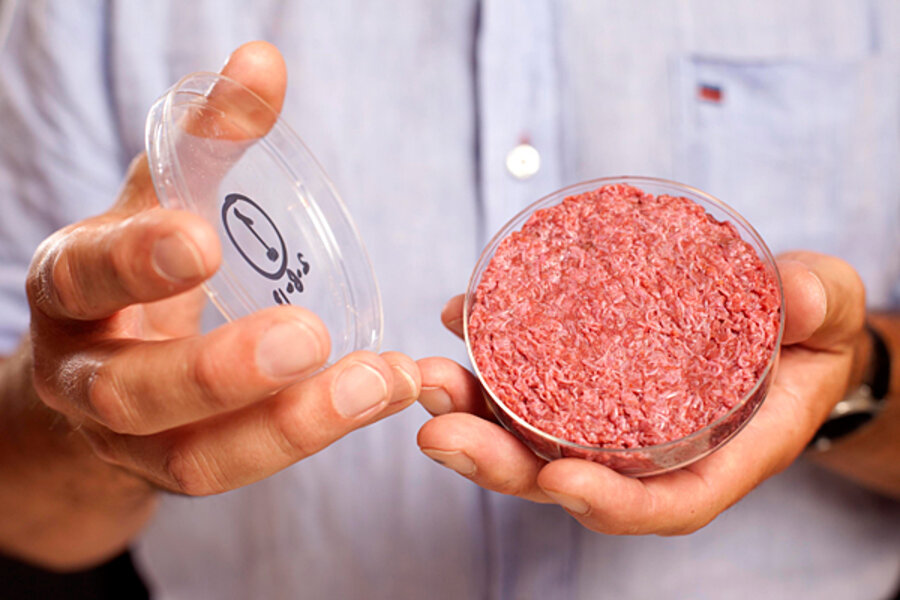Lab-grown hamburger tastes bland, costs a fortune, and could save the world
Loading...
In a chapter titled "Fifty Years Hence" in his 1932 collection "Thoughts and Adventures," future British Prime Minister Winston Churchill made a startling prediction: "We shall escape the absurdity of growing a whole chicken in order to eat the breast or wing," he wrote. "By growing these parts separately under a suitable medium.''
Now it seems that scientists have come close to fulfilling Churchill's prophecy, but with a burger.
Created by knitting together some 20,000 strands of protein grown in a petri dishes from muscle-specific stem cells taken from a pair of organic European cows, the world's first lab-grown beef patty made its debut at a media event in London on Monday.
The 5-ounce disk of "cultured beef" was colored using beet juice and saffron – real beef gets its redness from a protein called myoglobin, which was absent in the cultured muscle cells – then fried in butter by an English chef. The meal was presented on a plate with a bun and slices of lettuce and tomato to three tasters, as some 200 journalists and academics looked on.
The tasters – Chicago-based journalist Josh Schonwald, Austrian food scientist and nutritional psychologist Hanni Rützler, University of Maastricht physician and researcher Mark Post, who led the team of doctoral students that developed the burger – weighed in.
Their verdict: They nailed the texture, but the flavor needs some work.
"The texture, the mouthfeel, has a feel like meat," said Mr. Schonwald shortly after taking a bite. "The absence is – I feel like – the fat. It's a leanness to it. But the bite feels [like] a conventional hamburger."
Ms. Rützler concurred. "It's close to meat. It's not that juicy, but the consistency is perfect."
Rützler added that she thought it could have used some salt and pepper.
And then there's the matter of the price tag: The burger cost $332,000 to create, not counting the bun. Funding came from Google co-founder Sergey Brin.
Despite the blandness and cost, both of which Dr. Post predicts can be greatly improved in the coming years, a moo-less hamburger promises an alternative to unsustainable meat production practices. Currently, the meat industry contributes about 18 percent of greenhouse gas emissions, more than all the world's SUVs combined. Livestock takes up about 70 percent of all arable land, acreage that could otherwise be used to produce vegetables, grains, and fruits that could feed many times more people.
And the impacts of meat are only going to intensify: The United Nations estimates that demand for meat will increase by more than two-thirds in the next four decades.
A 2011 study found that cultured beef requires drastically less land and water and emits only a tiny fraction of the heat-trapping emissions.
And then there's the matter of animal welfare. "When you see how these cows are treated," said Mr. Brin in a video promoting the project. "That's certainly not something I'm comfortable with."
A single cow yields about 400 burgers. That's after being fed and looked after for 18 months. By contrast, stem cells taken from a single cow in a process that cultured beef promoters call a "harmless biopsy," can make up to 175 million burgers.








